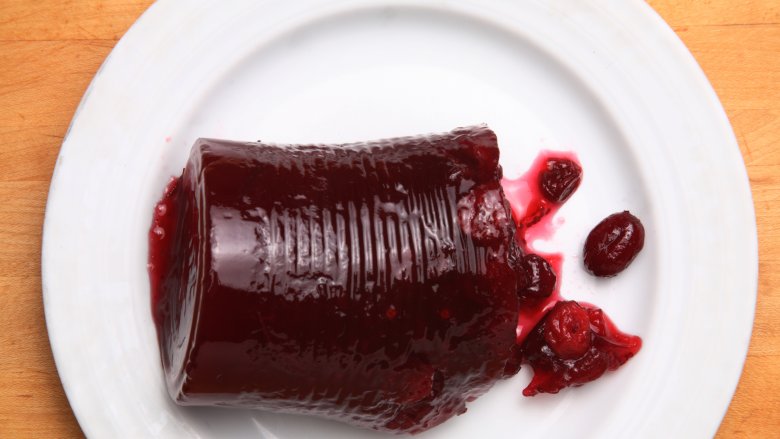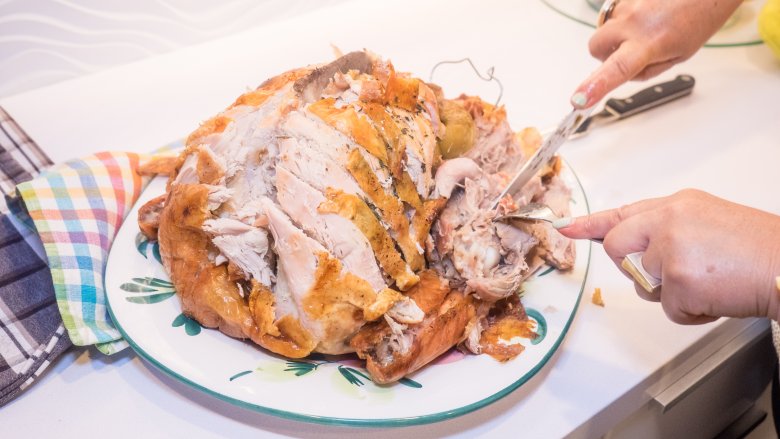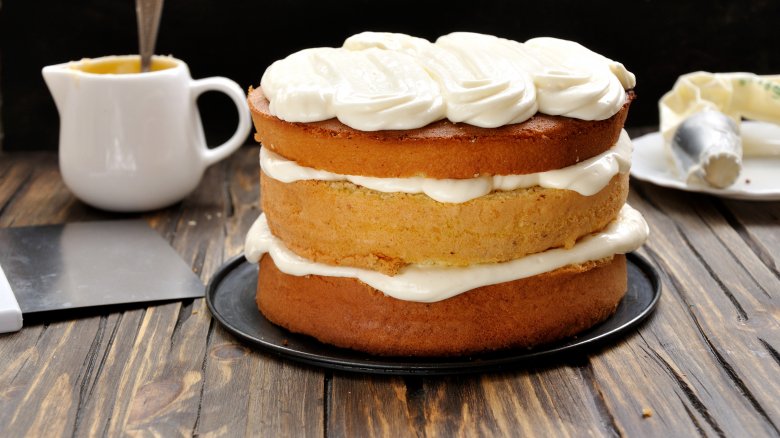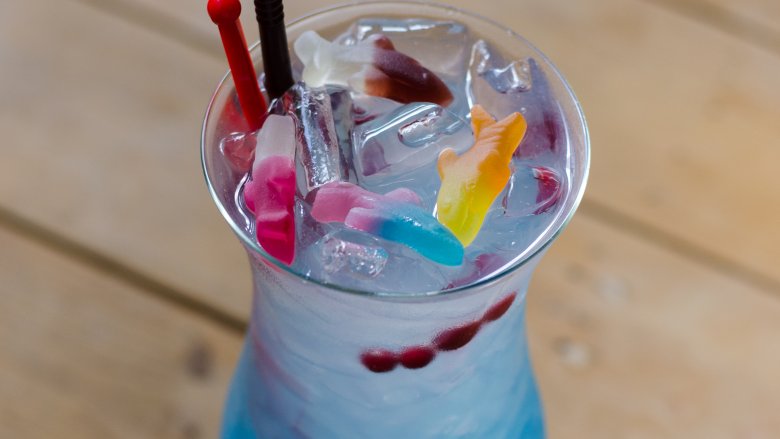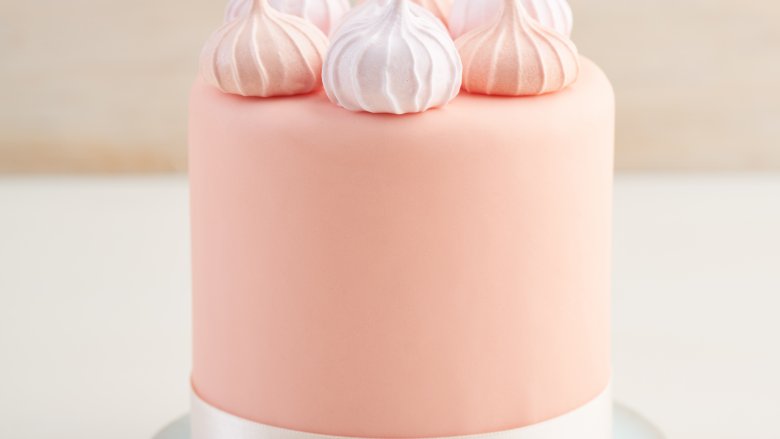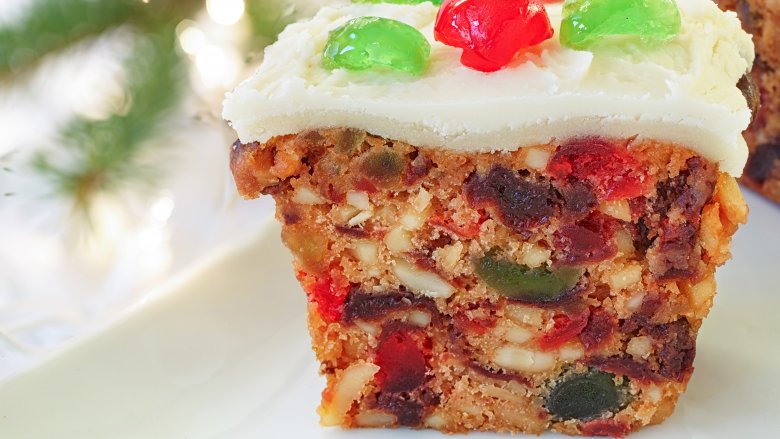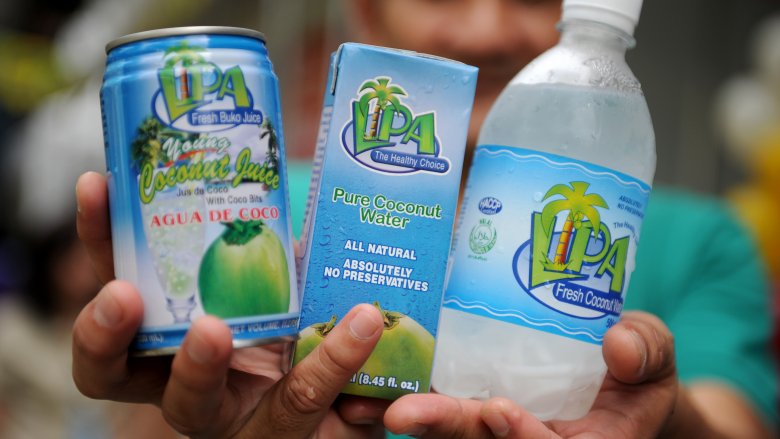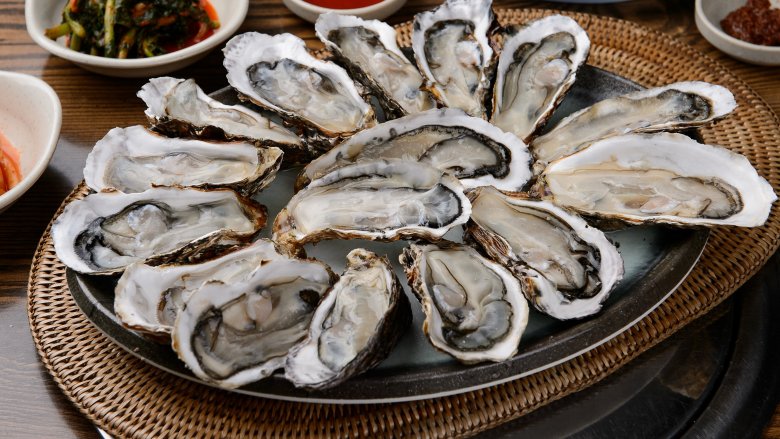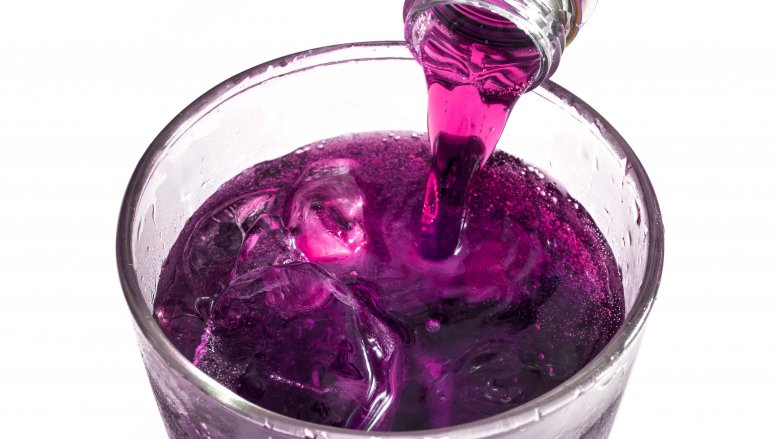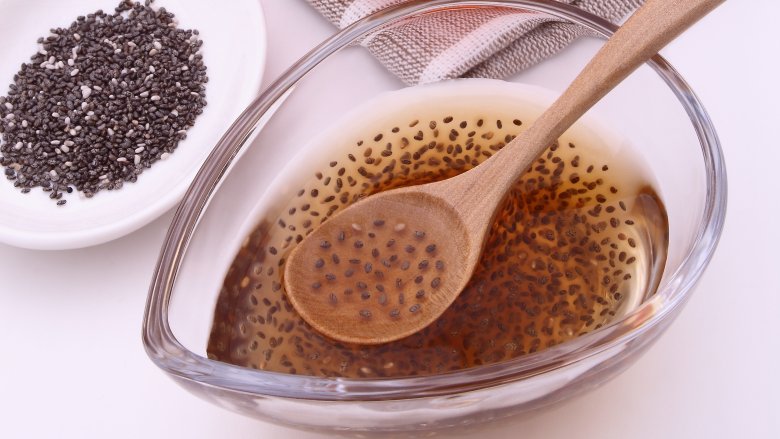Popular Foods We All Pretend To Love But Secretly Hate
We all have foods we simply don't enjoy, but for some reason, we keep on pretending we're all in, 100 percent. Love oysters! Can't get enough cranberry sauce! Seconds on the turkey, please! Lies, lies, lies. Just because some foods are popular doesn't necessarily mean they're well liked. As a food writer and recipe developer, I spend my days considering food, so I've had plenty of time to sit with the ones I love and those I hate. If pressed, I'm sure you have your own idiosyncratic list. Whether you can't stomach the textures, loathe the inexplicable flavors, or simply can't stand the taste, we all have foods we've only been pretending to find appealing.
As we spend our lives shopping in supermarkets, dining with friends, and gathering with family over meals, we probably have to choke down more loathed foods than we care to recount. As such, you might feel better to know that you're not alone out there. Here's the lowdown on some of the most secretly hated foods. Oh boy!
Cranberry sauce
A staple of Thanksgiving dinner, cranberry sauce is not usually eaten for the rest of the year—and for good reason! While people claim to enjoy (or tolerate) this seasonal side dish, I have long suspected that most actually find it as grotesque as I do. If you think about the whole existence of cranberry sauce even in the slightest, you can probably understand the reasoning. A heap of cold, gelatinous, bittersweet, tart mush hardly seems like the kind of thing anyone should willingly partake in—holiday or not. Don't get me wrong. I'm not against cranberries altogether, but surely there must be a more palatable way to serve them than from a can.
Native to North America, cranberries were abundant during the time of the first Thanksgiving in 1621. As such, native Americans consumed the berries in addition to using them to dye clothing and other textiles. While pairing cranberry with meat is a practice that's been around since the nineteenth century, the advent of cranberry sauce from a can took shape out of necessity to sell product. Fresh cranberries are dry harvested and retain their form, even though the practice requires more work. In the early 1900s, wet harvesting emerged, offering an easier way. As cranberries are harvested after they fall off their vines when bogs are flooded, the berries do not retain their shape, making them more appealing to customers once they've been processed into canned products. This commercial change gave way to the prevalence of long-lasting canned cranberry sauce.
Thanksgiving turkey
I would have to assume you were lying if you told me you genuinely like Thanksgiving turkey. Simply put, turkey is not delicious. If you want to eat poultry that's not all too flavorful, why not just have some chicken? The truth is that people will submit to eating turkey on Thanksgiving, but they simultaneously harbor a low-level hatred for it. Dry, bland, and altogether unremarkable, the only reason we still seem to carry on with the turkey-eating tradition seems to be just that: tradition.
The tradition of eating turkey on Thanksgiving was foisted on us many years ago. According to Slate, turkeys became a mainstay of holiday dinners due to the fact that it was big and cheap, qualities that make it perfect for serving to a large group of people. As such, turkeys became closely connected to Thanksgiving by the time President Lincoln declared the holiday official.
Naked cakes
I shudder when I see an unfrosted cake, and yet naked cakes are all the rage these days. Sloppy and unfinished, this dessert fad is essentially a special occasion layered cake with little-to-no frosting on the sides. In case you haven't noticed, they've blown up on social media as the next big thing in wedding cakes. The problem with naked cakes—in addition to looking like a hot mess, the equivalent of a child sent to school with smudgy eyeglasses and unlaundered clothes—is their tendency to be incredibly dry. Dry cake is truly devastating. If you plan to serve your cake immediately, maybe you can get away with leaving it unfrosted. The problem is that wedding cakes are often made in advance and if unfrosted, they dry out pretty fast. That leaves guests eating arid cake.
Widely credited with starting the dubious naked cake fad, Christina Tosi of Momofuku Milk Bar claims the unfrosted cakes highlight the flavors of the cakes themselves. While I concede her point, most cakes just aren't delicious enough to skip the frosting. To be frank, many are deeply flawed and desperately need to cover up. I'm over this naked cake business. Are you with me?
Signature cocktails
Signature cocktails seem like a good idea for a hot second before you realize that most of them, in the effort to be wholly unique, taste pretty awful. While I can understand the desire to serve drinks that match the theme of your event, I also insist that those strangely colored, sugary beverages are disgusting. Technicolored cocktails certainly don't inspire a lot of faith in me. Your best bet? Keep the bar stocked with beer, wine, and champagne—in other words, drinks that won't make your guests gag.
Signature drinks are meant to be inspired by the sensibility of the people hosting the event or the locale. While some signature cocktails make sense—think Mexican rum used in mojitos—the trend has gotten way out of hand.
Gluten-free anything
While I concede that legitimate food allergies like Celiac disease force some people to avoid gluten like the plague, where does that leave everyone else jumping on the gluten-free bandwagon? As someone who loves bread, I am convinced that those allergy-free folks who claim they prefer gluten-free food products are either delusional or straight up lying. If you're not actually allergic to gluten, you ought to know it's delicious.
As far as untasty food fads go, gluten-free is one of the biggest offenders. More expensive and usually not as delicious, gluten-free products are pricier to produce, as manufacturers have to seek alternative ingredients to replicate the light, chewy textures of regular baked goods. I discovered this truth while working as a professional baker at a hip cafe in Brooklyn, New York, where every third person seemed to claim a gluten allergy.
Fondant
Have a I used fondant to decorate cakes? Yes. Do the finished products look amazing and flawless? No doubt. That said, fondant tastes like rubber whether you buy premade at a specialty cake shop or whip some up from scratch. Made with powdered sugar, cornstarch, and a thickener called agar-agar, this smooth cake decorating substance is malleable and allows the decorator to create intricate cake designs. The beautiful, flawless cakes you see on magazine covers are often decorated with fondant. Unfortunately, it tastes pretty disgusting.
Your best bet for dealing with a fondant-covered cake is to simply peel it off. Bakeries often use it to create pretty cakes and seal in moisture. That said, the fondant is generally smoothed over a layer of frosting on the cake. Once you peel it off, you're left with cake with regular frosting, which is a combo infinitely more edible.
Fruitcake
Please contact me directly if you personally know people who enjoy eating fruitcake. I will take extra measures to avoid encountering them, since I already harbor a great fundamental distrust for their tastes and values. While the town of Claxton, Georgia lays claim to being the fruitcake capital of the world, I can't help but wonder why any place would want to own that distinction. While this unworthy cake is considered a seasonal staple around Christmastime, it actually tastes like trash. Relentlessly dense, cloyingly sweet, and most often dry, I just know in my heart that no one truly likes fruitcake.
Let me break down the hate. The candied fruit chunks that speckle fruitcakes are frighteningly retro. The bumpy texture of the cake makes it appear diseased. And the worse part is that fruitcakes are aged so they last a long time. Goodness, why?! They can neither be compared to fine wines nor can they stand proudly next to nuanced cheeses, and yet they are indeed aged.
Milk
In college, I broke up with a boyfriend who regularly drank glasses of milk like a toddler. Convinced that an adult who drank milk straight-up was showing me a major red flag, I decided to make a run for it. Drinking milk—a behavior normally attributed to young children in need of calcium for purposes of growth—must indicate some sort of nascent sociopathic tendencies, amiright? In Stanley Kubrick's adaptation of A Clockwork Orange, the insane murderous protagonist drinks not hard liquor but—you guessed it—milk.
Moreover, milk does not taste particularly good, certainly not delicious enough to be enjoyed on its own. With a cookie, maybe. Other strikes against drinking milk? Milk mustaches are not sexy despite what those 90s ads would like you to believe. No one can trust the expiration dates indicated on milk containers. You don't want to have to sniff something before you can eat or drink it. Be honest. You hate milk, too.
Coconut water
I want to like coconut water but alas, I can't live a lie. If we're all being honest, coconut water tastes the way I imagine a puddle of rain might. Despite the health benefits attributed to coconut water, my affinity for actual coconuts, and the fact that I see all these perfect New York City people drinking bottles of it after intense SoulCycle workouts, I can't get on board.
Coconut water doesn't taste like coconuts, which is perhaps my biggest point of contention. I'm sure I'm not the only one who tastes the strange salty-earthy flavor of this trendy beverage and want to gag immediately. I'd rather eat a million bananas to get my potassium and drink all the Gatorade in the world for my electrolytes than partake in the coconut water scam. You're with me, right?
Raw oysters
Raw oysters are considered simple, elegant, refined—a delicacy. They are often served on a bed of ice in a stunning presentation that would make the most juvenile person feel grownup and worthy. And yet, we need to talk about elephant in the room. Raw oysters tastes like boogers. People often tell me to swallow whole oysters—presumably so I can't sense the texture. If I need to avoid knowing about its texture, the food I'm eating is already scaring me.
Well, for those brave enough to admit they don't like oysters, I feel you big time. Eating what you can only assume is akin to a ball of snot is daunting. Salty, slimy, and weirdly soft, oysters are pretty disgusting if you stop to consider them.
Grape-flavored foods and drinks
Grape jelly packets at the diner are always left on the table in abundance long after guests have left the premises. Why? Grape-flavored anything is downright disgusting. With a clinical taste like fluoride at the dentist, grape stuff is unpalatable, yet society still manufactures grape soda, grape candies, grape fruit snacks (ugh, spare the children). Please stop!
The simple reason why grape-flavored foods and drinks are the worst is easy to figure out. They imitate the essence of real grapes, only poorly. While grapes themselves are quite tasty, that flavor is not meant for the artificial route. Fresh grapes taste amazing. Wine is divine. And yet, anything else that bears the grape flavor label tanks. Fact.
Chia seeds
Yes, yes, chia seeds are loaded with nutritional benefits. As plant-based source of protein, these little black seeds are aces—not to mention the antioxidants and naturally low-carb feature. If you've tried to eat healthier at any point in the past several years, you're likely to have tested out some chia seed recipes. No shame. The only problem with these tasteless seeds is that they're actually pretty gross once they're incorporated into foods.
Chia seeds swell up like disgusting amphibian eggs, which kind of rules them out for any sane person who works hard in life to avoid tasting that type of texture. If you're not a fan of the way chia seeds taste but can't openly talk about your repulsion, know that you're not alone.
Now you can breathe a sigh of relief. Perhaps some of the foods you've only been pretending to like made it on this list and you feel less alone. I hope so. Stay strong.

